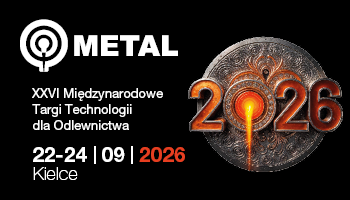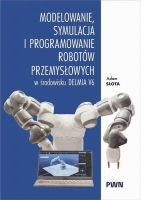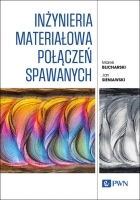Digital twin in manufacturing. Part I. State of the art, architecture and applications
Cyfrowy bliźniak w procesach wytwórczych. Część I. Stan zagadnienia, architektura i zastosowania *
Mechanik nr 01/2023 - Nowe technologie
ABSTRACT: In this paper, some important achievements in the development of Industry 4.0 (I4.0) strategy based on the concept of advanced digitalization covering smart manufacturing activities using the Internet of Things (IoT) and corresponding digital twin (DT) solutions are highlighted. Some popular definitions and their practical meanings, modelling principles and possible applications are given. Some new trends and enabling technologies in smart (intelligent) manufacturing, i.e, complete digitalization of assets (units, machines, equipment, etc.), processes and systems based on the evolutionary development of DTs are discussed. This paper should encourage industry and academia to undertake this important problem more seriously, to implement its future potential in manufacturing and enhance the I4.0 strategy.
KEYWORDS: manufacturing, Industry 4.0, smart manufacturing, Internet of Things, digital twin
STRESZCZENIE: W artykule dokonano przeglądu osiągnięć w zakresie rozwoju strategii Przemysłu 4.0, opartego na zaawansowanej cyfryzacji z wykorzystaniem internetu rzeczy (IoT) i cyfrowego bliźniaka (DT – digital twin). Podano definicje i zasady modelowania oraz przedstawiono możliwe obszary zastosowań cyfrowego bliźniaka. Omówiono trendy w inteligentnym wytwarzaniu, m.in. kompletną cyfryzację maszyn, procesów i systemów wytwórczych, oparte na ewolucyjnym rozwoju koncepcji cyfrowego bliźniaka. Artykuł powinien zachęcić do podjęcia problematyki wprowadzania nowych narzędzi informatycznych w rozwoju strategii Przemysłu 4.0.
SŁOWA KLUCZOWE: przemysł wytwórczy, Przemysł 4.0, inteligentne wytwarzanie, internet rzeczy, cyfrowy bliźniak
BIBLIOGRAFIA / BIBLIOGRAPHY:
[1] Grzesik W. „Biologizacja procesów wytwórczych. Stan zagadnienia, zasady i trendy rozwojowe”. Mechanik. 11 (2022): 8–13, https://doi.org/10.17814/mechanik.2022.11.2.
[2] O’Sullivan J. ”A case-study in the introduction of a digital-twin in a large-scale manufacturing facility”. Cork Open Research Archive (CORK), (2020), http://hdl.handle.net/10468/11867.
[3] Kumar S., Patil S., Bongale A., Kotecha K., Bongale M. “Demystifying artificial intelligence based digital twins in manufacturing – a bibliometric analysis of trends and techniques”. Library Philosophy and Practice (e-journal), Library University of Nebraska, https://www.researchgate.net/publication/346057367.
[4] Kusiak A. “Smart manufacturing”. International Journal of Production Research. 56/1-2 (2018): 508–517, https://doi.org/10.1080/00207543.2017.1351644.
[5] Kritzinger W., Karner M., Traar G., Henjens J., Sihn W. “Digital twin in manufacturing: A categorical literature review and classification”. IFAC-PapersOnLine. 51/11 (2018): 1016–1022, https://doi.org/10.1016/j.ifacol.2018.08.474.
[6] Bauernhansl T., Hartleif S., Felix T. “The digital shadow of production – a concept for the effective and efficient information supply in dynamic industrial environments”. Procedia CIRP. 72 (2018): 69–74, https://doi.org/10.1016/j.procir.2018.03.188.
[7] Lu Y., Liu C., Wang K.I., Huang H., Xu X., “Digital twin-driven smart manufacturing: connotation, reference model, applications and research issues”. Robotics and Computer-Integrated Manufacturing. 61 (2019), doi: 10.1016/j.rcim.2019.101837.
[8] Singh S., Weeber M., Birke K.-P. “Advancing digital twin implementation: a toolbox for modelling and simulation”. Procedia CIRP. 99 (2021): 567–572, https://doi.org/10.1016/j.procir.2021.03.078.
[9] Qi Q., Tao F., Hu T., Anwer N., Liu A., Wei Y., Wang L., Nee A. “Enabling technologies and tools for digital twin”. Journal of Manufacturing Systems. 58 B (2021): 3–21, https://doi.org/10.1016/j.jmsy.2019.10.001.
[10] Tomczyk T., van der Valk H. “Digital Twin Paradigm Shift: The Journey of the Digital Twin Definition”. 2022, https://www.researchgate.net/publication/360195802.
[11] Jones D., Snider Ch., Nassehi Y., Yon J., Hicks B. ”Characterising the Digital Twin: A systematic literature review”. CIRP Journal of Manufacturing Science and Technology. 29A (2020): 36–52, https://doi.org/10.1016/j.cirpj.2020.02.002.
[12] Grieves M. “Digital twin: manufacturing excellence through virtual factory replication”. A Whitepaper by Dr. Michael Grieves (2014), www.apriso.com.
[13] Yang D., Karimi H., Kaynak O., Yin S. “Developments of digital twin technologies in industrial, smart city and healthcare sectors: a survey”. Complex Engineering Systems. 1:3 (2021), https://doi.org/10.20517/ces.2021.06.
[14] Crawford M. “7 Digital twin for applications in manufacturing”. (21 March 2021), www. asme.org/topics-resources/content/7-digital-twin-applications-for-manufacturing.
[15] Tao F., Qi Q., Liu A. ”Inaugural Editorial – Digital Twin”. Digital Twin, 2021(1/1), https://digitaltwin1.org/articles/1-1.
[16] Singh M., Fuenmayer E., Hinchy E., Qiao Y., Murray N., Devine D. “Digital twin: origin to future – review”. Applied System Innovation. 4 (2021): 36, https://doi.org/10.3390/asi4020036.
[17] Raza M., Kumar P., Hung D., Davis W., Nguyen H., Trestian R. “A Digital Twin Framework for Industry 4.0 Enabling Next-Gen Manufacturing”. Conference paper (2020), https://doi.org/ 10.1109/ICITM48982.2020.9080395.
[18] ISO 23247 – Automation systems and integration – Digital Twin Framework for Manufacturing, https://www.iso.org/obp/ui/#iso:std:iso:23247.
[19] Wang J., Ye L., Gao R.X., Li C., Zhang L. “Digital Twin for rotating machinery fault diagnosis in smart manufacturing”. International Journal of Production Research. 57/12 (2019): 3920–3934, https://doi.org/10.1080/00207543.2018.1552032.
[20] Gartner Top 10 Strategic Technology Trends for 2019. Kasey, Panetta, (October 15, 2018), https://www.gartner.com/smarterwithgartner/gartner-top-10-strategictechnology-trends-for-2019/.
[21] Jones D., Snider Ch., Nassehi A., Yon J., Hicks B. “Characterising the Digital Twin: A systematic literature review”. CIRP Journal of Manufacturing Science and Technology. 29 (2020): 36–52, https://doi.org/10.1016/j.cirpj.2020.02.002.
[22] Fuller A., Fan Z., Day Ch., Barlow Ch. “Digital Twin: enabling technologies, challenges and open research”. IEEE Access (2020), https://doi.org/10.1109/ACCESS.2020.2998358.
[23] POB5.T4 Symulacje i modelowanie procesów, https://www.polsl.pl/pob5/pob5-t4-symulacje-i-modelowanie-procesow.
[24] Dilmegani C. ”15 Digital Twin Applications/ Use Cases by Industry in 2022”, (April 25, 2022), https://www.jamasoftware.com/blog/15-digital-twin-applications-and-use-cases-by-industry-in-2022.
[25] Digital production planning and virtual commissioning, https://new.siemens.com/global/en/markets/automotive-manufacturing/digital-twin-production.html.
[26] Yanagimoto J., Banabic D., Banu M., Madej L. ”Simulation of metal forming – Visualization of invisible phenomena in the digital era”. CIRP Annals – Manufacturing Technology. 71 (2022): 599–622, https://doi.org/10.1016/j.cirp.2022.05.007.
DOI: https://doi.org/10.17814/mechanik.2023.1.1
* Artykuł recenzowany



.jpg)


















